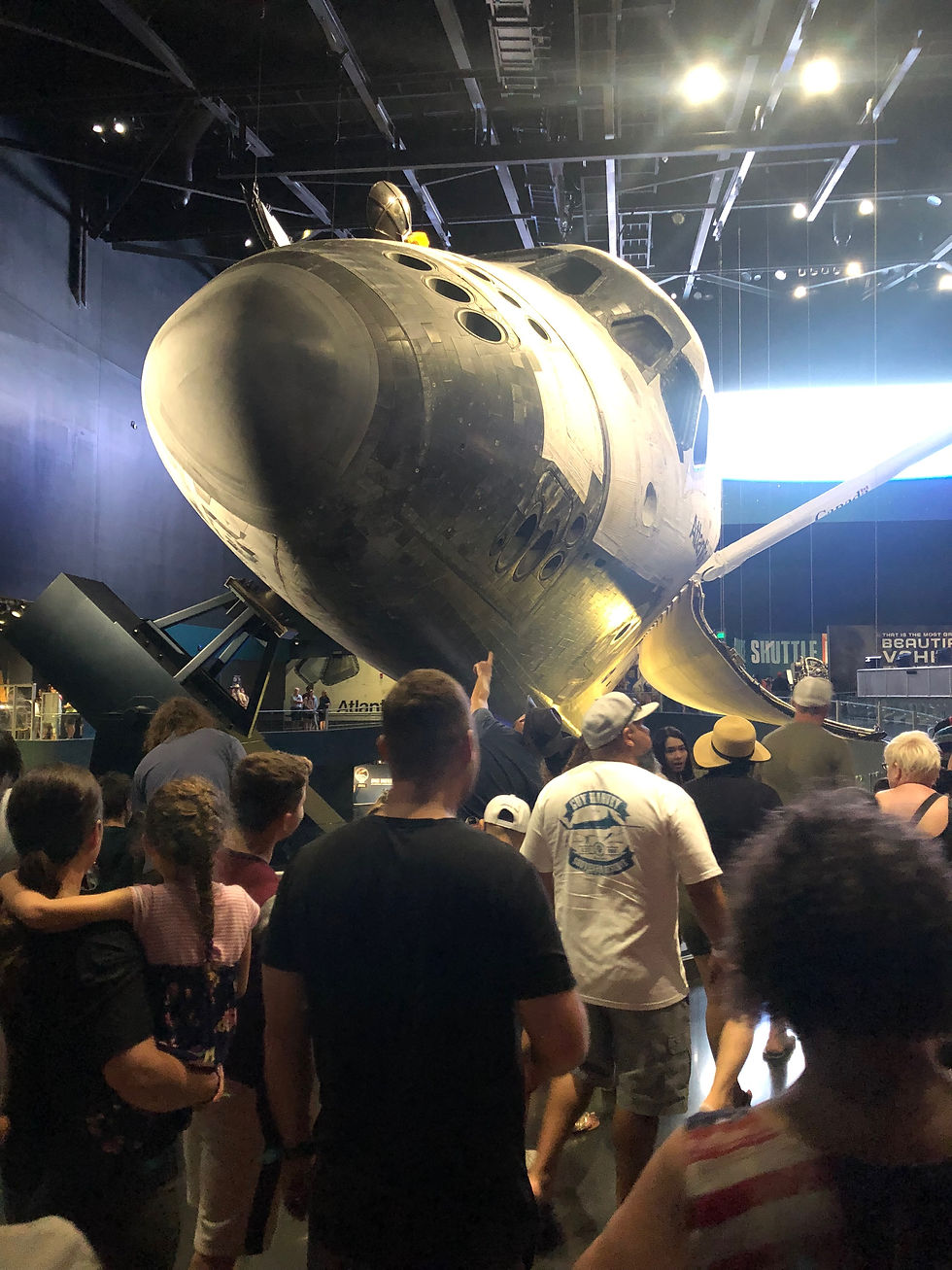Kennedy Space Center 2019
- Frank Oles

- Jun 15, 2019
- 3 min read

The last time we were on a family vacation was back in 2016. So when we had an opportunity to visit Florida again this year, Clayton specifically requested that we visit the Kennedy Space Center. The last time I visited the Space Center was back in 1992, so I was curious to see all the changes that had taken place. I was overwhelmed with how much there was to see and do.

One of the first attractions that greets visitors is the Rocket Garden, with life-size examples of all the rockets in the US Space Program. Walking into this area, you get a sense of the scale and also the pioneering spirit of the Space Program. It captures your imagination right away.

This is the Rocketdyne F-1 rocket engine. The Saturn V Rocket from the Apollo Space Program used 5 of these engines for the first stage of this rocket. The size and scale of this engine up close is almost other-worldly. Imagine lighting this beast, with all the fire and thrust spewing out of the nozzle!

Visitors to the Rocket Garden can sit inside scale models of the different space capsules. For as big as the rockets were, the actual capsules were quite small and confining. It is like being inside a pop can strapped to the top of a huge Roman candle!

There was a little bit of goofing around in the gift shop, as Clay models a kid space helmet on a rocket launchpad gantry walkway.

Our next stop was the Heroes and Legends exhibit. It's a brilliant display of historic artifacts arranged to help tell the story of the space program. When you look at these pieces, they speak to you. Seeing this space suit up close was incredible - the stitching and the craftsmanship!. The details are from another place and time.

One of my favorite artifacts in this exhibit was this survival knife. Every element that went on board the space vessels was carefully considered - every gram of weight was critical. All astronauts were equipped with a survival knife in case they landed in the jungle or some other harsh terrain. They only had so much control over where the capsules would land, and they wanted to make sure the astronauts could cut themselves free if they were tangled or defend themselves until rescue came for them.

Seeing these space capsules up close is another trip! Cloth covered wires, riveted together metal, and canvas fabric - it's all the details and these details speak volumes. Everything feels had-crafted and crude compared to say a modern laptop or the interior of a luxury car.

Here is a close up detail of a tether for the parachute. Interesting surface details for the various paints and thermal coatings that were used. It's hard to imagine something like this going into space, but it did - and that's what makes their achievements so incredible.

Our next stop was the Journey to Mars exhibit. Clay is standing in front of a prototype for a next generation Mars Rover. While it's easy to talk of a journey to Mars, the logistics and the science behind a mission like that will blow your mind. This exhibit aimed to make the challenges more digestible for everyday humans like us.

The Space Shuttle exhibit - I was completely unprepared for what was in store. It was the best part of our day, and if I had known just how much there was to see, I would have prioritized this exhibit first - it is that good.

After a brief show, a curtain is pulled back to reveal Space Shuttle Atlantis in all its glory. And it is a sight to behold. Again, the scale of everything is what first grabs you, but it's the examination of all the details that really is mind-blowing.

This thing was in space! The display of this craft and the surrounding exhibits of the cockpit and space station engineering are beyond compare. You can read about it in books and even watch videos on YouTube, but NOTHING compares to actually seeing something like this in person.

As a gear head, it's hard not to get excited about engines. And the Shuttle had some of the best on Earth! 500,000 pounds of thrust per engine. Look at this engine and you can definitely see how the engineering is more advanced. What will the propulsion systems of the future look like and how far will they take us? It's hard not to ponder the future after visiting an exhibit like this.




Comments